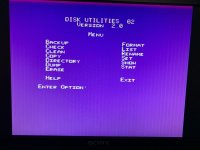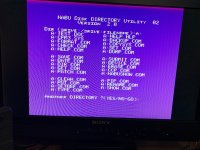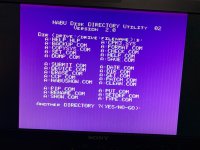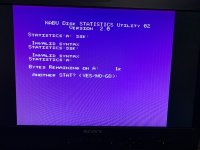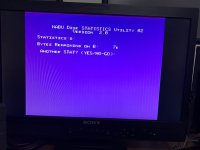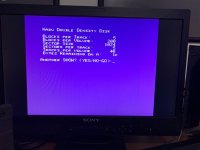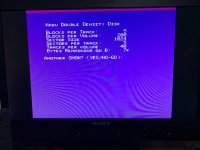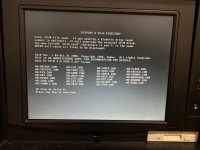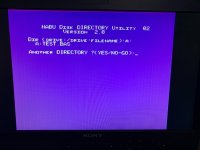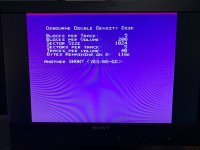snuci
Veteran Member
this is getting frustrating. Similar to the DSDD diskettes, I have the original SSDD drives in the NABU. I format diskettes, write files and I could even transfer files with 22Disk so I have all of the CP/M Plus files on the disk but as soon as I image the disk with ImageDisk and write out a copy, there are no files shown in a subsequent directory listing on the NABU. 22Disk sees them fine. I then write a file to the disk and it's the only file that shows up. I just imaged that disk and the directory for that one is roughtly at 0x3F10 of the IMD file. The NABU happily will do a directory listing of that directory but not the one at 0x1400.
I am using an earlier Rev A version of the firmware. It does not have the option to boot from a floppy. I am using this because the NABU Network software doesn't work with Rev B. The Nabu computer with floppy drive came with Rev B. I may be chasing bugs or something. I don't know why imaging and writing a disk would make any difference unless it was sompletely off but I don't specify anything except for 40 tracks, 1 side, single stepping. I did have to use ldkraemer's 22Disk definition because otherwise, there was a conflict.
I will try to figure out something else but I am afraid the Rev A firmware may have me running around in circles.
I am using an earlier Rev A version of the firmware. It does not have the option to boot from a floppy. I am using this because the NABU Network software doesn't work with Rev B. The Nabu computer with floppy drive came with Rev B. I may be chasing bugs or something. I don't know why imaging and writing a disk would make any difference unless it was sompletely off but I don't specify anything except for 40 tracks, 1 side, single stepping. I did have to use ldkraemer's 22Disk definition because otherwise, there was a conflict.
I will try to figure out something else but I am afraid the Rev A firmware may have me running around in circles.

